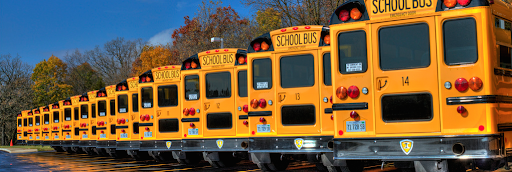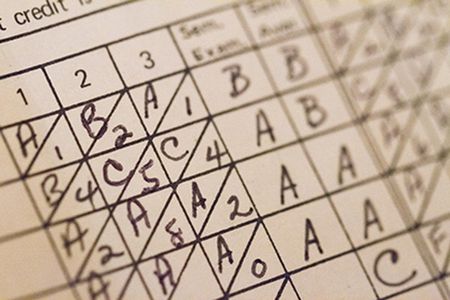This is a very personal story.
There are a thousand reasons to admire and support public education—beginning with the idea itself: a free, high-quality public good, offered to all children, a societal building block. There are community schools, with wraparound services and creative magnet schools to nurture special talents and interests. There are new pilot programs and old-faithful heritage programs and Friday night lights. There are special services for kids with a range of disabilities. No one can be turned away. It’s all good.
When the neighborhood is sinking rapidly, businesses leaving and families fleeing, there is good old Oak Avenue Elementary, its playground and parking lot fenced and gated—but still open. Public schools are often the safest places for children, where they can be warm, fed, and cared for, and read a story. Public education may be messed up and threatened these days, in the land of the free, but its noble genesis and its persistence make it one of our best ideas.
This, however, is MY story, the reason why I will defend public schools until my last breath.
My allegiance to public education came first from my dad, who—ironically—received nearly all of his formal education in a Christian school. Not a Catholic school (they’re two different things, where I come from)—a Betsy DeVos-type, all-white Christian school, in western Michigan.
This was a long time ago—in the 1920s and 1930s. My grandparents, who had five children and not much money, scrimped and sacrificed so their children could go to school with the children of other Dutch immigrants, a school with rigid discipline, and very specific expectations.
My grandparents had no compunctions about a school where the children of Italian and Polish immigrants–likely Roman Catholic–or children with dark skin weren’t welcome, a school that used the Bible as text and began each day with prayer. No school dances. No movies downtown. No getting out of your church clothes on Sunday afternoons because you were going to church again on Sunday evening. Better-off families expected to offer Christian schoolteachers a nice chicken dinner on pre-arranged Sundays.
My dad transferred to the public high school in 9th grade and dropped out at the beginning of his senior year, going to work full time and never returning to school. He’d skipped a grade in elementary school, so he was barely 16. It wasn’t a big secret around our house—he claimed he left school because he found it too easy and boring, and he didn’t like being bossed around. My mother used to say that he was the smartest person she knew, and also the touchiest—so perhaps it was true.
My cousins went to Christian school. My brother, sister and I went to public school. When I was in kindergarten, my grandparents offered to pay tuition for me to go to Christian school, but my parents were adamant: their kids were going to public school.
My mother, also from a Dutch immigrant family, went to public school. There was some tension between the two families, centered mostly around who was holier and more upright. It seemed as though letting your children ‘mix’ with God knows who in public schools was irresponsible. Dangerous.
Eventually, my folks moved us to the less prosperous outskirts of town, where there was a K-8 school but no high school. They joined a committee to raise local bond monies to build a high school. I remember my mother canvassing the neighborhood, encouraging neighbors to vote yes, so my baby boomer posse, riding our bikes on the new sidewalks, could have our own neighborhood high school.
I graduated from that high school—with its beautiful auditorium, two gymnasiums, a bowl stadium and a courtyard—in its seventh graduating class. My mom was active in the PTA, and my dad ran the chains beside the field at football games.
My mother also spearheaded a drive called ‘Dollars for Scholars’ which provided no-interest loans to graduates who went on to post-secondary education. Although neither of my parents went to college or saw a college degree as necessary or even desirable–they thought I should go to beauty school–they co-signed when I took out a loan to supplement the scholarships I got from Central Michigan University. Two hundred dollars—a figure that seems ludicrous now, but was the extent of my college borrowing, easily paid back on my generous $9050 salary when I got a teaching job.
It was my teachers who were adamant—I had to go to college. My band teacher, especially, convinced me that I had talent and smarts and belonged on campus, away from home.
Throughout my K-16 career, and even my graduate degree—all in public schools and universities—I got a good, comprehensive education. Most of my teachers, in the 1950s and 1960s, were caring and enthusiastic—and the ones who weren’t taught me other lessons. A small fraction of my HS classmates was college-bound, but that didn’t mean our teachers weren’t demanding. They were. I went to a blue-collar high school, but I was well-prepared for college work. And all of us were educated to be productive citizens—basic skills, a work ethic and the requirements of civic engagement.
At the university, I don’t remember a single graduate assistant teaching any of my classes; my professors were degreed and tenured, and generally worth paying attention to. Friends who went to more prestigious universities joked about undergraduate classes being taught by unqualified, green TAs, while their famous professors were remote, standing in front of massive lecture halls. That was not my experience.
Those were different times, however, and I went through K-16 as part of a huge same-age, post-war bubble. But I clearly remember decades when public education was respected and affordable, and K-12 schools were the center of tens of thousands of communities across the nation.
So what happened?
If you haven’t been paying such close attention to the education wars, you might not realize that policy around education and the public schools has for two decades been the locus of experimentation with the power and reach of billionaire philanthropists seizing a giant public sector institution from the professionals who have been running the schools for generations. The billionaires’ idea has been that strategic investment by data wonks and venture philanthropists can turn around school achievement among poor children.
There have always been students in our schools for whom English is a second language. There are chronically under-resourced schools, as well as serious inequities between schools for white children and those in neighborhoods where black and brown children live. There have been failed busing schemes and teacher shortages and Why Johnny Can’t Read. We’ve been tinkering with the structural problems in public education since Horace Mann. Everybody thinks they know how to ‘fix’ public schools.
But only recently has the general public been subjected to abject crapola like this: Public Schools are Teaching Our Children to Hate America. (Short version: Well-known and well-funded education gadfly blames American students’ lack of skills and knowledge on a single NY Times supplement.)
I hate to use the phrase ‘War on Public Schools’–but here we are. We may be losing the war, too, as parents choose ‘new and different and heavily advertised’ over repairing and refurbishing a foundational institution once functional, even beautiful. We have ample evidence of the destruction.
Still. I owe who and what I am to public education—and know the same is true for the thousands of students I taught, and the millions who are learning in classrooms, well-equipped or derelict, as I write this.
Love your public schools, and they will reward you.





